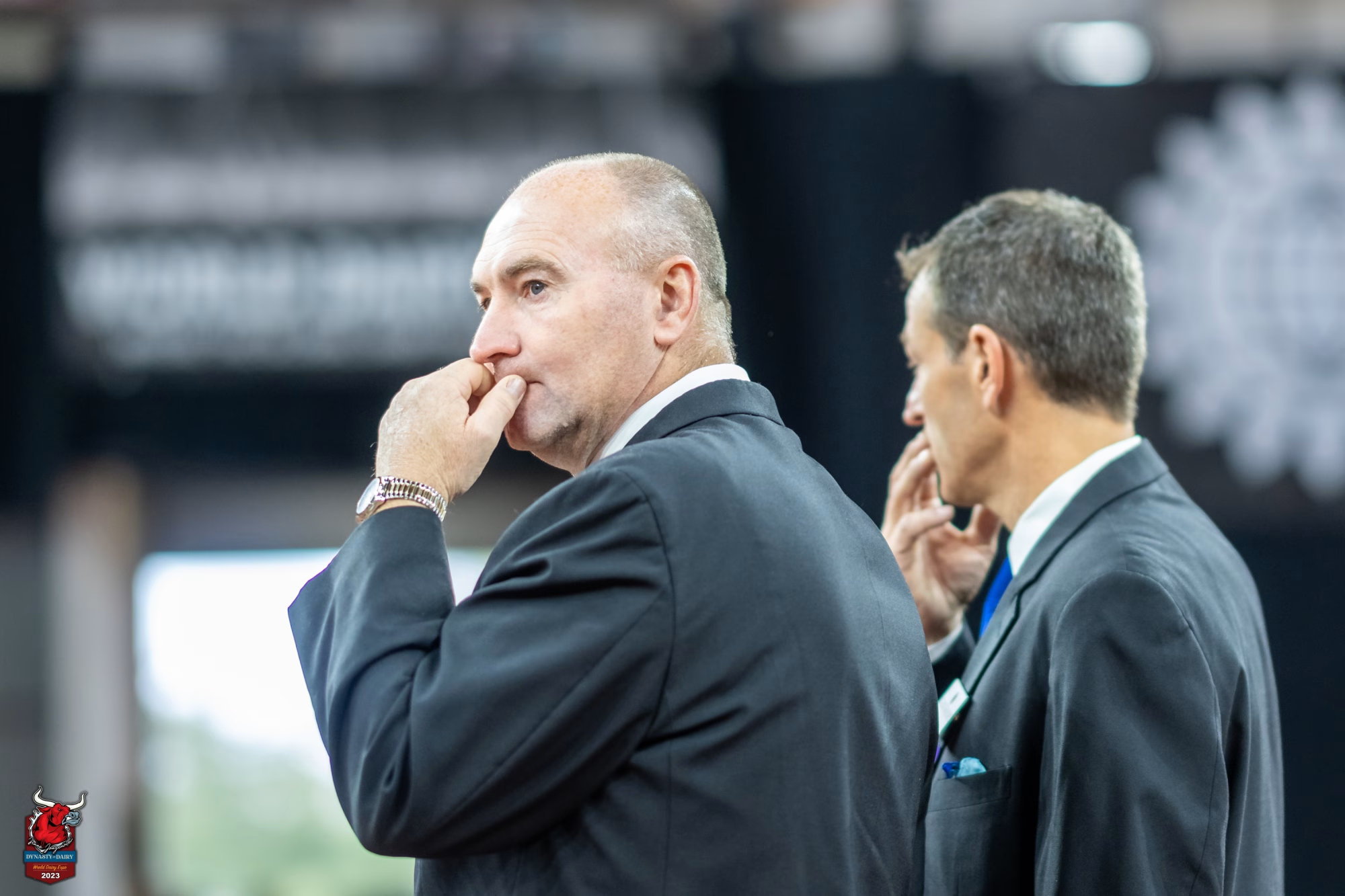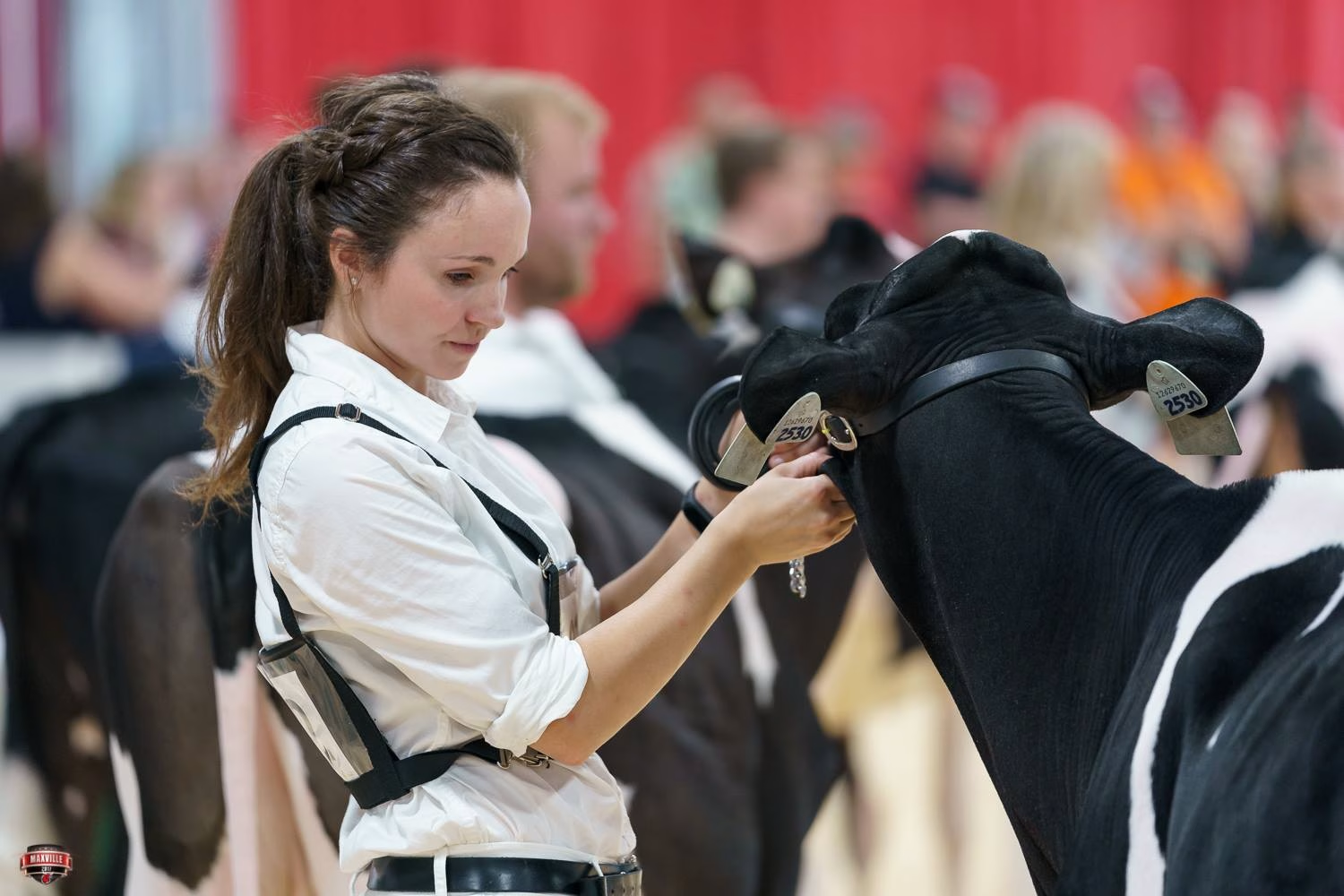Explore what makes Adam Liddle’s path to the A.C. “Whitie” Thomson Memorial Award unique. How did his passion for dairy excellence shape his success?
Summary:
The article highlights Adam Liddle’s receipt of the 2024 A.C. “Whitie” Thomson Memorial Award, acknowledging his dedication, leadership, and sportsmanship in the dairy industry. Starting from humble beginnings in Argyle, New York, Liddle forged a path in dairy farming after his family farm was sold, eventually growing Liddleholme Holsteins into a prestigious name in the show circuit. Recognized as a global dairy judge, Liddle’s career spans exhibitions on four continents, illustrating his profound influence and commitment to excellence. His inclusive family dynamics, with contributions from his children and their spouses, underscore the success of their herd. Ultimately, Liddle’s journey embodies the values central to the Whitie Thomson award, showcasing his exemplary commitment, local influence, and global impact as a role model for future generations in the dairy community.
Key Takeaways:
- Adam Liddle received the prestigious A.C. “Whitie” Thomson Memorial Award, underlining his leadership and sportsmanship in the dairy industry.
- The Liddleholme Holsteins, operated by the Liddle family, have become a recognized name within the dairy show circuit, gaining numerous accolades.
- Adam Liddle’s journey from losing his family farm to developing a successful dairy operation demonstrates resilience and passion.
- Liddle’s active involvement in judging dairy shows internationally has broadened his influence and insight within the global dairy community.
- His commitment to excellence and fostering community spirit in the dairy industry makes him a deserving award recipient.

Every industry has its legends, those extraordinary people whose contributions influence the future and inspire future generations. The A.C. “Whitie” Thomson Memorial Award highlights such heritage in the dairy industry. It recognizes extraordinary devotion, leadership, and sportsmanship among dairy aficionados. This award is more than simply a personal distinction; it honors the ideals that propel the industry ahead, encouraging innovation and success.
This year’s honor goes to Adam Liddle, an outstanding herdsman from Argyle, New York. His narrative is a personal accomplishment that demonstrates the power of unwavering enthusiasm and perseverance. Liddle’s experience demonstrates the immense influence that one person can have on a whole community.
“Being chosen as the winner of such a prestigious prize reflects acknowledgment for one’s commitment beyond cattle showmanship. It’s an homage to the ideals that run throughout our business.”
Stay with us as we examine Adam Liddle’s outstanding career. His accomplishments, from modest beginnings to becoming a well-known character on the dairy show circuit, are admirable and educational. His career echoes many dairy producers’ obstacles and possibilities worldwide.

Honoring a Legacy: The A.C. “Whitie” Thomson Memorial Award
The A.C. “Whitie” Thomson Memorial Award honors one of the dairy industry’s most prominent personalities. Established to honor White Thomson’s legacy, this award reflects his steadfast dedication to developing talent and fostering excellence in the dairy industry. White was regarded for his exceptional herding and showman talents and his ability to set a good example.
The award emphasizes essential qualities that Whitie exemplified, beginning with leadership. Authentic leadership in the dairy sector entails more than simply directing operations; it also means motivating people, cultivating a learning environment, and pushing innovation. Another essential tenet of the award is sportsmanship, representing Whitie’s belief in fair competition and peer respect. This characteristic highlights the necessity of humility and grace in success and failure.
Finally, contributions to the dairy sector are essential. The A.C. “Whitie” Thomson Memorial Award honors people who have had a substantial influence, whether via breeding excellence, raising industry standards, or teaching future generations. Those who earn this honor are regarded as torchbearers of Whitie’s vision to preserve the enthusiasm for dairy farming and enhance the sector.
From Crossroads to Legacy: The Making of a Dairy Advocate
Adam Liddle’s foray into the dairy sector began under unusual circumstances: as an eighth-grader, his life took an unexpected turn. Adam was at a crossroads when his parents decided to sell the family farm. Rather than being discouraging, this change served as a crucible for developing his enthusiasm for dairy farming. High school was the start of his active engagement in the show circuit, aided by his father’s move to manage Pamtom Farm in Hudson Falls, New York.
This formative year at Phantom Farm was essential, providing Adam with his first significant exposure to dairy showmanship’s complex demands and complexities. Adam had a profound respect for the art and science of dairy farming as he saw and participated in the everyday operations of the farm under his father’s stewardship. This event was revolutionary, developing fundamental knowledge and encouraging a long-term devotion to the sector. The skills and insights gained during these early years undoubtedly influenced Liddleholme Holsteins’ subsequent triumphs. They solidified Adam’s image as a knowledgeable and ardent dairy industry champion.
From Humble Beginnings to Show Circuit Prestige: Liddleholme Holsteins’ Ascent
From modest beginnings, Liddleholme Holsteins has grown into a dairy show powerhouse. The journey, profoundly connected with the Liddle family’s passion and shared goal, started when Adam and Nicole Liddle set out to refine their herd and become a top name among Holstein breeders.
The farm’s success may be traced mainly to the cohesive family dynamics at work, in which each member plays a unique function that adds to the operation’s overall success. Adam’s cattle selection, management knowledge, and Nicole’s administrative skills establish the foundation for a successful company. Their children, Anthony, Brock, Hailee, and their wives are critical in overseeing daily operations and growing their reputation for producing high-quality cattle.
This united family effort has resulted in a flawless farm business and multiple awards on the show circuit. Liddleholme Holsteins has a fantastic list of award-winning cows, including All-NY, All-American, and Junior All-American. A noteworthy occasion was Liddleholme Resurrect Lu, an excellent cow that captivated the industry’s attention by receiving an Excellent-97 grade and becoming the first Production Cow at the renowned World Dairy Expo, followed by All-American recognition.
The Liddles’ ability to thrive consistently in breeding and display demonstrates their continuous dedication to the dairy sector. Liddleholme Holsteins’ long-term success reflects their dedication and hard work, establishing them as a leading dairy farming company.
From Victory to Vanguard: Liddleholme’s Path to Dairy Distinction
From the victory of Liddleholme Resurrect Lu to the overall prosperity of his farm, Adam Liddle has constantly exhibited an unwavering dedication to excellence in the dairy sector. Liddleholme Resurrect Lu’s historic victory as the first Production Cow at the World Dairy Expo in 2018 was more than a triumph; it was a monument to Adam Liddle’s imaginative breeding and persistent commitment to excellence. This achievement catapulted the Liddleholme prefix into the forefront, solidifying its reputation by producing high-quality cows that succeed in both the show ring and the production line. Such awards do not come quickly; they result from years of painstaking planning, strategic breeding, and an unwavering determination to push the limits.
Liddle’s path in the dairy industry exemplifies the combination of enthusiasm and tenacity. His skill is evident not only in his cattle accomplishments but also in his broad international judging portfolio. Liddle offers a lot of expertise and an acclaimed viewpoint to the judging arena, having evaluated exhibitions on four continents (Canada, Europe, Australia, and Africa). This worldwide experience broadens his perspective and adds to his status as a leading figure in the global dairy industry. These successes demonstrate Liddle’s breadth of expertise, elevating him not just as a herdsman but also as a worldwide champion for dairy excellence.
The Global Influence of Adam Liddle: A Judge Beyond Borders
Adam Liddle’s significance as a judge at some of the world’s most famous dairy exhibitions should not be underestimated. His discriminating eye and insightful observations have earned him a place in the dairy world, where he is tasked with assessing top-tier cattle at various international events. Liddle’s experience extends beyond the United States, having officiated at Junior Holstein exhibitions and overseen Red & White and Guernsey exhibits at the World Dairy Expo. His impact extends to cattle exhibitions in Canada, Europe, Australia, Africa, and Switzerland.
This global reach has elevated Liddle’s status as a judge and positioned him as a critical factor in establishing the standards of excellence in the global dairy business. His efforts go beyond the show ring; they are reflected in the breeding choices of cow farms aiming for the gold standard of dairy excellence. Through these responsibilities, Adam Liddle continues to inspire current and future generations of dairy show professionals, establishing a high standard for judging excellence. His status as a judge has undoubtedly strengthened the worldwide dairy community, underlining his invaluable role in promoting a culture of world-class excellence in dairy cow contests.
Adam Liddle: Embodying Excellence and Community in Dairy
Adam Liddle’s unrelenting dedication to the dairy sector and his profound love for excellence and sportsmanship make him the ideal winner of the A.C. “Whitie” Thomson Memorial Award. His career in the business exemplifies not just his personal and professional accomplishments but also the community and spirit that the award recognizes. Liddle has constantly displayed the qualities that the medal honors by devoting decades to mastering the dairy farming profession and relentlessly contributing as a prominent figure in the show community.
His leadership in establishing the Liddleholme Holsteins brand speaks volumes. Liddle has raised dairy farming standards via diligent breeding and displaying and created a culture of excellence that extends beyond his farm. The many honors received by Liddleholme, particularly the extraordinary success of Liddleholme Resurrect Lu, demonstrate a constant pursuit of quality and innovation. This influence exemplifies the award’s ideals: leadership, sportsmanship, and community service.
Liddle’s inclusive family style, in which each member is excited about the collective farm’s success, exemplifies Whitie Thomson’s collaborative attitude. As a dairy sector steward, Liddle has brought his global experience, sharing information and ideas while establishing international dairy relationships. His considerable judging experience, ranging from the World Dairy Expo to international circuits, demonstrates his competence and responsibility as a champion for dairy excellence.
Liddle’s combination of local development and worldwide impact throughout his career makes him a role model for future generations in the dairy industry. Adam Liddle’s honor aligns with the objectives and ideals of the A.C. “Whitie” Thomson Memorial Award, promoting honesty and leadership in the dairy sector.
The Bottom Line
Adam Liddle’s path from a fresh eighth-grade student to the dairy show circuit to a world-renowned judge and award-winning dairy advocate exemplifies devotion and enthusiasm. His accomplishments with Liddleholme Holsteins, which established industry standards, demonstrate personal success and a dedication to raising the bar for dairy quality and leadership. Liddle’s tale is of endurance and impact, demonstrating how one man’s idea can inspire a community and affect an industry worldwide. With leaders like Liddle at the helm, what new heights may dairy innovation and leadership achieve? In today’s quickly changing world, who will take the next step to lead with distinction?
Learn more:
- The Stars Shine at the 2014 World Dairy Expo
- New Leadership & Trustee Elections at Holstein UK Annual General Meeting
- Fairlife Kicks Off Construction for Mega Dairy Processing Facility in Webster
 Join the Revolution!
Join the Revolution!
Bullvine Daily is your essential e-zine for staying ahead in the dairy industry. With over 30,000 subscribers, we bring you the week’s top news, helping you manage tasks efficiently. Stay informed about milk production, tech adoption, and more, so you can concentrate on your dairy operations.







 Join the Revolution!
Join the Revolution!





